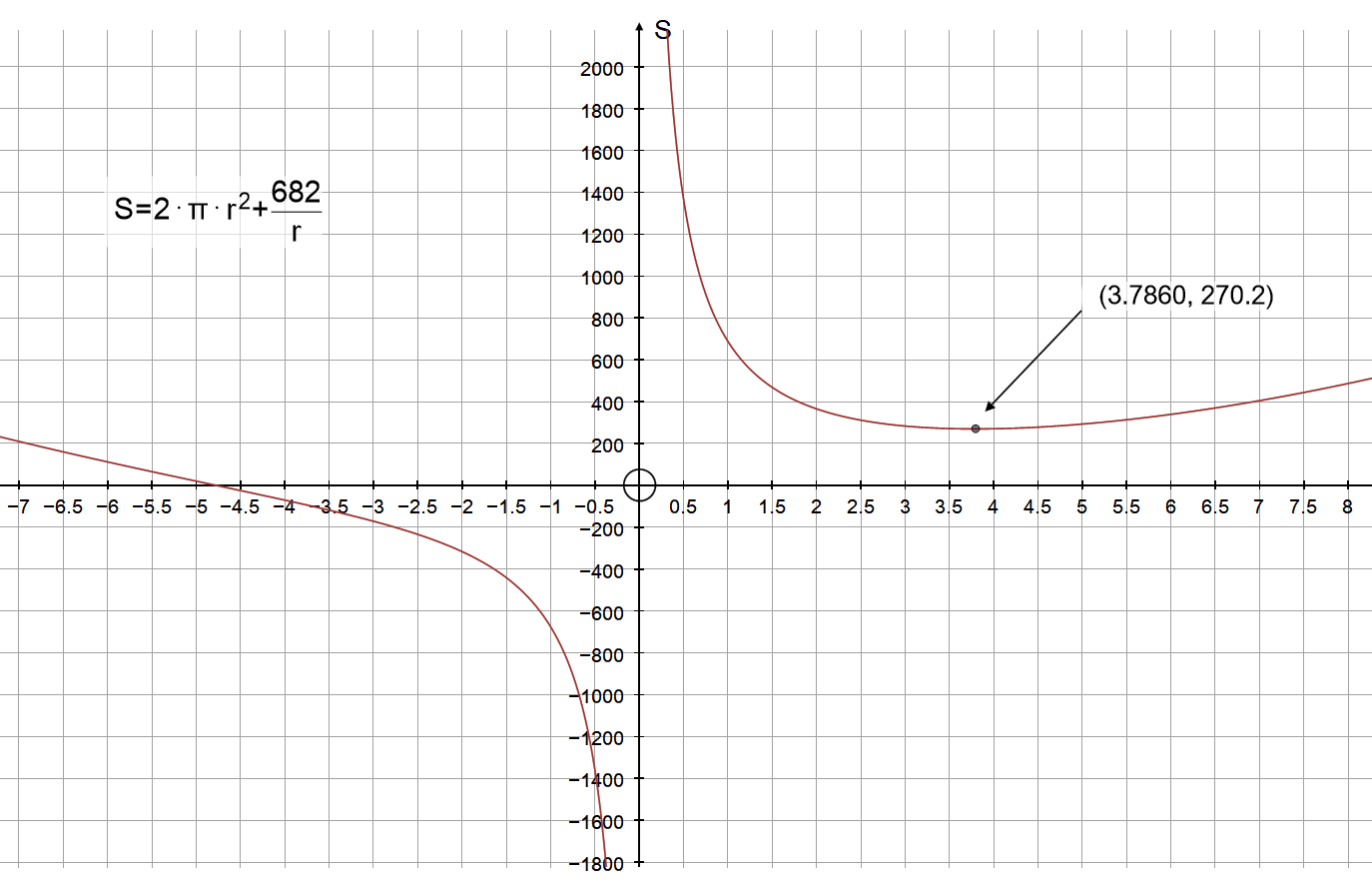A soda can is to hold 12 fluid ounces. Find the dimensions that will minimize the amount of material used in its construction, assuming the thickness of the material is uniform?
I am Canadian so I don't know imperial measurements by the way !
I am Canadian so I don't know imperial measurements by the way !
1 Answer
Explanation:
I have converted fluid ounces to cubic centimetres.
We need the can to have a volume of
If the can has a radius
We can't differentiate this expression in the given form, because it contains two variables
But the volume given by:
needs to be
We can now find
Substituting this into the surface area formula:
Simplifying:
Since we need to find the change in surface area as the radius changes, we need to differentiate this in respect of
Now we know that local maximum and minimum points have a gradient of zero. These therefore can be identified using our first derivative and equating this to zero.
Solving for
We know that if the second derivative is
Plugging in our value for
This is greater than zero, so
So a can with our given radius an height will have a minimum surface area.
Note: Dimensions will be in cm, since we converted volume into these units.
Below is the graph of surface area in terms of radius and height. If you approximate the found values of
Graph of


